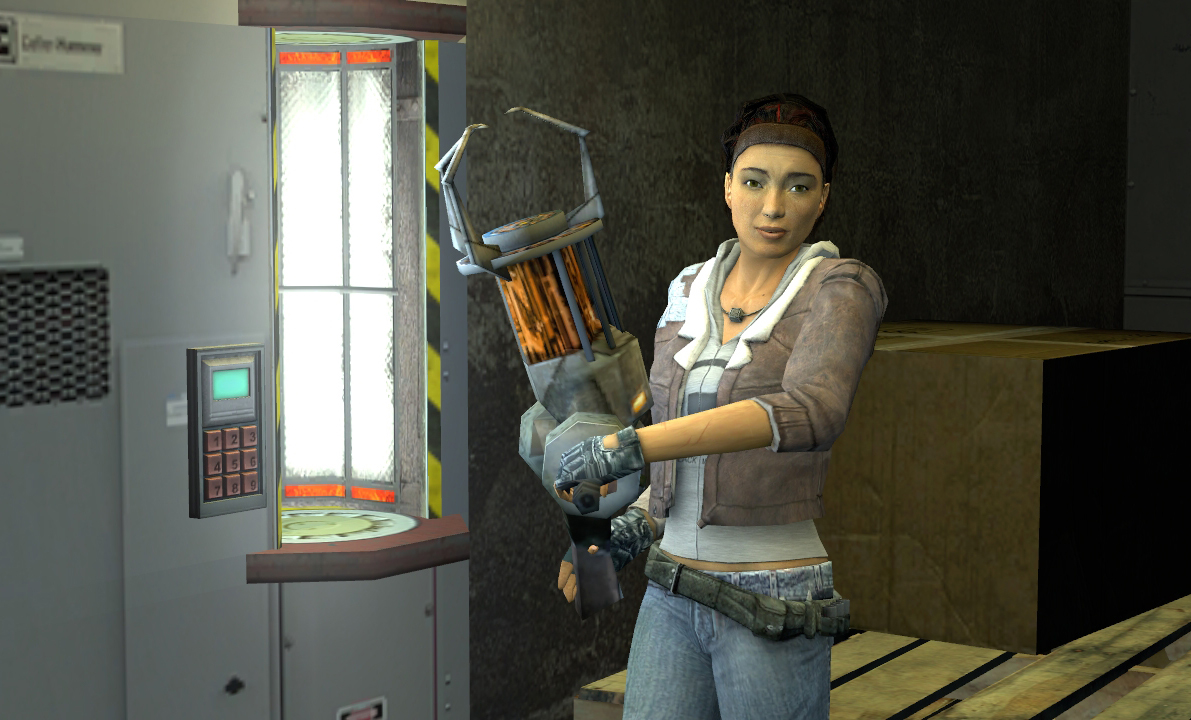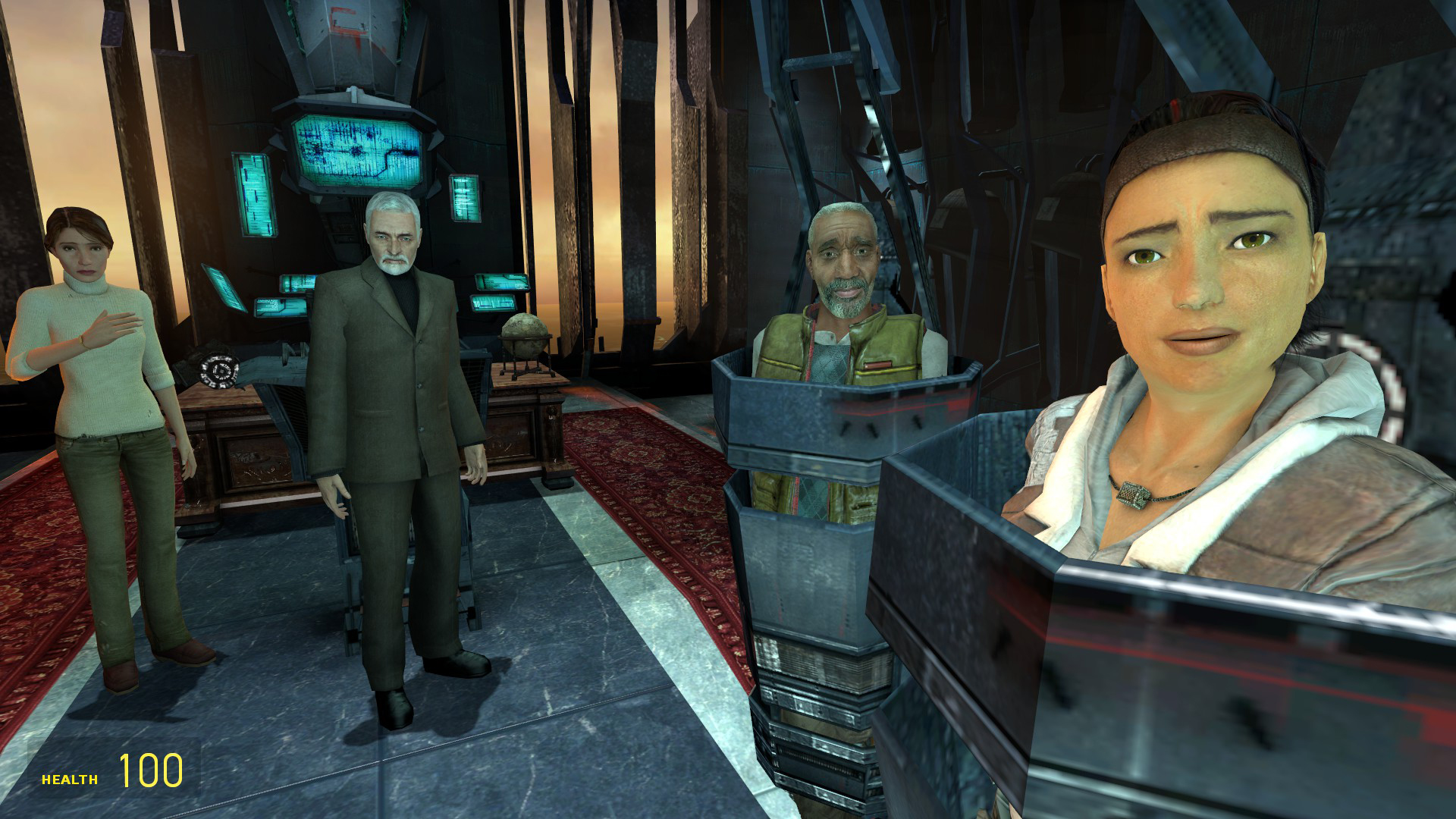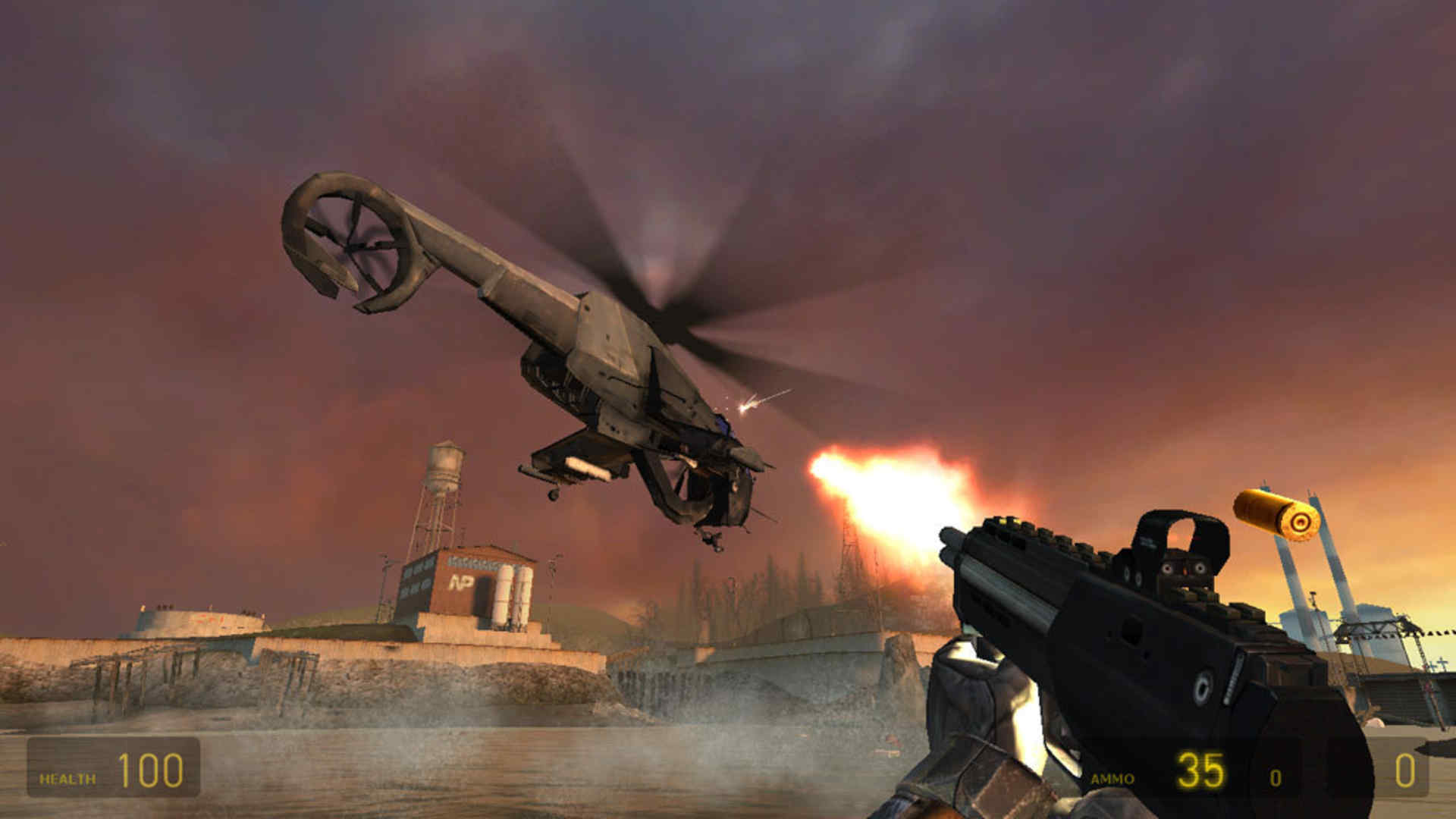Meet the minds behind Half-Life 2
What does it take to make the greatest game of our time?

We're digging into the PC Gamer magazine archives to publish pieces from years gone by. This article was originally published in PC Gamer UK 2005, and you can find more classic pieces here. For more quality articles about all things PC gaming, you can subscribe now in the UK and the US.
Great games don’t just appear. They’re moulded and shaped over years. Millions of man-hours are poured into their development. To create even a mediocre game is a massive technological and artistic challenge. To create one of the finest games of all time, one that demonstrates everything this entertainment medium can achieve, to rise head and shoulders above your peers... that takes genius.
Right now, three of those geniuses are sitting across the vast table that dominates Valve’s Seattle boardroom. Marc Laidlaw, Valve’s in-house writer. Bill Van Buren, a producer and designer. Bill Fletcher, senior animator, formerly of Disney. These three quiet, understated men are nothing less than magicians, responsible for bringing to life virtual characters, and at the same time satisfying players who just want to break things. The walls are covered in testaments to their skills: magazine covers, box-art, countless awards and trophies, and trinkets sent in by their legions of fans. The whiteboard behind us is bursting with arcane scribbles: profiles, plans for the future. They can wait.
We have other questions to deal with. What makes Alyx tick? Why does Dr Kleiner keep a pet headcrab? How did Valve bring these virtual people to life? These are all important questions. First though, we need to clear up something about a scientist’s beard.
PCG: I’ve just noticed, Marc, that your beard is an exact replica of Gordon’s.
Marc Laidlaw: Oh, er. It came from...
Bill Van Buren: Actually, the beard is from another member of staff. Gordon’s actually a morph of four or five Valve employees.
Keep up to date with the most important stories and the best deals, as picked by the PC Gamer team.
ML: Yeah. He’s the average dad developer.
He’s certainly an unconventional game hero. The biceps aren’t there, he doesn’t have rippling pecs, he even wears glasses.
ML: Imagine what he looks like when the suit comes off. He’s probably just about 90 pounds. It’s all exoskeleton and suit support.
Yet when a player enters Half-Life, you’re asking them to take on that role. I wondered, Marc, if in your writing, Gordon has a voice or some kind of internal dialogue.
ML: Not really. Gordon’s just the narrative conduit. I’m interested in everything else. What does all that say to the player? If you’re just a pair of eyes looking into a scene, how do we let the rest of the world tell you they know you’re there, or that they’ve been thinking about you, while you’ve been gone? There have to be hooks—they have to glance at you, occasionally. My favourite is the final scene, where Mossman is talking to Breen, and Breen is looking at you, he rolls his eyes. That’s clearly for your benefit.

I’m guessing that beneath all the storytelling you do, a lot of your work is in choreography... I don’t think anyone really talks about what’s a great ‘choreographed moment’ in a game. When you’ve got an idea for a great scripted moment, how do you begin working it into the game. Maybe you could describe how the teleporter scene in Half-Life 2 came to be?
ML: Well, we started talking about that scene many, many years ago. We always knew we wanted to do a parallel to the teleport disaster in the first game. Originally it was going to be Doctor Kleiner and Barney—you weren’t going to meet Alyx until much later on. Through our process of figuring out how and where we were going to introduce characters to the game, we realised we should bring her forward, into that scene, so you would meet her in the context of characters who you were familiar with. We could make it feel like “Oh, I’m back with old friends, she’s one of their friends, so she must be good, she’s one of my friends, too.” That just created an instant bond with the player.
That scene is all about setting up expectations. It’s very different from the first game, where you didn’t know what was going on. This time every player expected to jump into a teleporter. We set up the idea that something good could happen this time. We’d let Alyx get ahead of you, you see everything that you’re about to do. From the first-person point of view it’s hard to picture yourself in context. When you let someone else do it you have a good mental image of you getting in the teleporter, you know what to expect. Again, playing with people’s expectations.
As for drama, we knew we had to do some suit training, we had to re-introduce the characters somehow. But also, one of the important things was “we want to build characters”, and “we wanted to build other details in to the game”. We wanted to create something you hadn’t seen in a game: a family. We wanted to do a stepmother-daughter uneasiness. Then there’s the non-essential stuff—like the thing with Kleiner, Lamar and Barney. The more of these details we put in, the more real characters feel. They have a life that extends outside the boundaries of the scene, and the game. You get this feeling that “they know each other, they have history”.
BVB: This is all about emphasising the importance of other characters. We wanted to make the point that you’re not going to save the world alone. You’re a catalyst, you’re important, but other characters are setting up the scene. The goal isn’t just to liberate the world, or even to liberate you, originally it’s just to get Eli, the father of this girl who puts trust in you. You can’t do that alone. You need to work with the other people in this world. If you want to do something big, you need to have other people working with you.
ML: In Half-Life, things happen because you show up. We don’t have you turn up, as the thing starts. We have you show up, and the thing begins as the result of you showing up. You’re the first domino that knocks all the other dominos over. What we do is let you arrive, walk around, see a bunch of dominos, you push on them, and they fall. That’s what we like to do.

Marc, you were a published author before you came to Valve. Did you have to adapt your writing style to work in games?
ML: From a writing perspective, everything you want to reveal about characters should come through dialogue. It’s not like there was a bunch of backstory about the characters we wanted to deliver. We knew the characters, we knew a bit about their history, we wanted to make sure that when they were talking, they were referring to this whole backlog of things that have gone before, that they don’t have to explain to one another, just like if you walk into a room where two people who’ve known each other for a long time are talking. They wouldn’t spend any time at all talking about the stuff they already know. But you’d pick up a lot about their relationship just by watching them interact. That was the dramatic thing we wanted to aim for. But that’s not any different to how the scene would be laid out in a movie or a book.
But surely the demands are different. You’re going to be writing to fit the game, aren’t you?
ML: Yeah. Things change in the course of building the game. We’d cut a level, and that would alter a relationship.
Is it always that direction? Are you always writing the story to service the level design? Are you just fitting the story together?
ML: Yeah, that’s part of my job. We’re all interdependent. They might make a decision from a level design point of view, and it’s more like a fun challenge. “How can we do without that plot point? What does that afford us? Now that we don’t have to do this piece, what can we do instead?” Usually I end up with two pieces that are not connected, but right up next to each other and I have to think of a way of linking them. But you see this really, really obvious connection, that was there the whole time. Then you organise around that.
That could have an odd effect. We eliminated the guy who was supposed to be Alyx’s father, and suddenly that changed the whole balance of the cast. Originally, Alyx was a go-between for rebel forces, she was can-do, rugged and tough. Her father was an army general who’d been caught, and planted into a Combine installation. In the end we cut the Combine installation, losing him. We felt this was one character too many; we had a bunch of older men characters who started to feel kind of similar. At some point, I went “I don’t think we need this Captain Vance, it’ll be one less character to worry about.” We weren’t giving enough development to the characters we had.
As we did that, for a little while Alyx was on her own, just floating over here. Meanwhile, we had Eli, here on the other side of the table, unconnected. We just pushed them together, saying “Ooh. We think they’re related.”
We eliminated the guy who was Alyx’s father.
Marc Laidlaw
Did that cause any conflicts?
ML: It wasn’t like there was big resistance to it. Everybody just went... oh.. yeah, OK, this really helps us. We rewrote her story, basically just filling in gaps we weren’t happy with anyway. If we had her be the daughter of any other character, that would have introduced a lot more complications, whereas, when you meet her as Eli’s daughter, then you instantly understand her connection with Black Mesa, and to you as the player. All those connections are shorthand—they help us in not having to explain a lot of stuff, in the background. That means we can spend the time in our scenes just doing the really direct, emotional thing.

